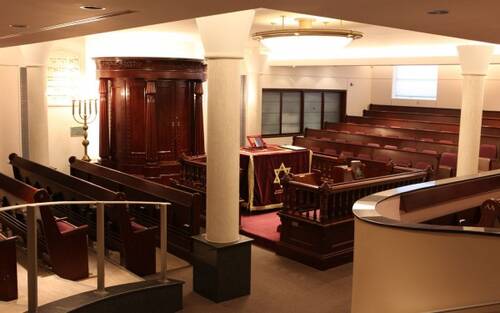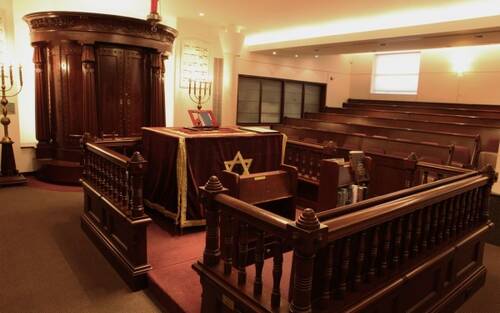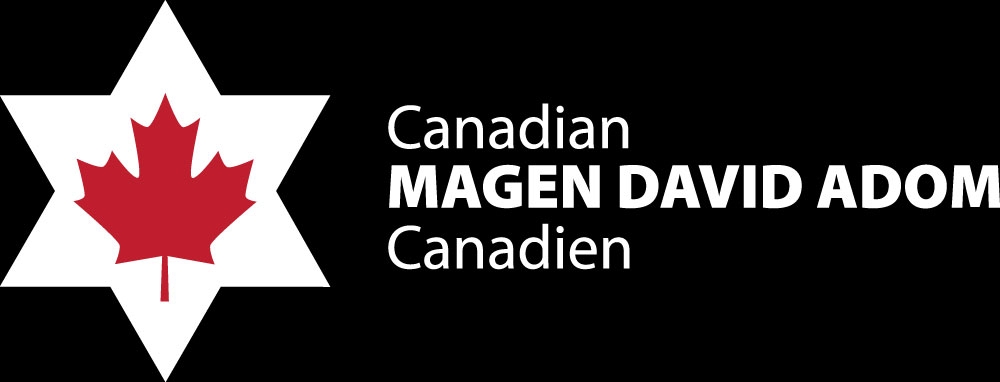Bonjour / Hello [nickname_else_first_name],
Table of contents
1) Perashat Hashavoua - Rabbi Eli Mansour
2) Halakhat Hashavoua (Halakhot related to day to day life) - Hazzan David Azerad
- The Lifting of the Torah Scroll (Hagbaha / Hakama) and its return to the Ark -Peninei Halacha
3) Holy Jokes!
4) FOR KIDS!
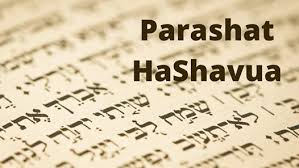
This Week's Parasha Insight with Rabbi Eli Mansour
Parashat Yitro- The Earth's Fuel
Parashat Yitro is famous for the story of Ma’amad Har Sinai – G-d’s Revelation to Beneh Yisrael at Mount Sinai, when He pronounced the Ten Commandments.
This is not the first time when we find the number 10 associated with a major world event. In fact, we encountered it just recently, in our reading of earlier Parashiyot in the Book of Shemot, which tell of the ten plagues which G-d brought upon Egypt. Moreover, the Mishna in Pirkeh Abot (5:1) teaches that G-d created the world with "Asara Ma’amarot" – ten "proclamations." As we read in the opening chapter of the Torah, G-d brought each part of the world into existence by proclaiming that it should exist, and there are ten such proclamations in all.
Thus, the world came into existence through ten proclamations, G-d brought Beneh Yisrael out of Egypt through ten plagues, and He presented the Torah to them in Ten Commandments. What is the significance of this parallel? How are these three events connected?
A number of early commentators explained that the ten plagues served as a reaffirmation of G-d’s creation of the world. At the time of creation, there were no witnesses to the event, and so it could not be later proven. In order to prove that He created the world, G-d brought ten supernatural plagues – each of which corresponds to one of the "proclamations" through which He created the world. For example, the plague of blood, when G-d transformed Egypt’s water into blood, and then changed it back into water, reaffirmed His creation of water. The fact that G-d exerted such control over the water demonstrated that He created it. Likewise, bringing wild beasts confirmed His creation of wildlife, and bringing darkness confirmed His creation of light. By suspending the laws of nature, and then restoring them, ten times, G-d affirmed His absolute control over the world, thus proving all ten stages of His creation of the universe.
The ten plagues, then, were brought not simply to force Pharaoh to release Beneh Yisrael, but, primarily, to reaffirm that G-d created the world.
And then, after the Exodus from Egypt, G-d brought Beneh Yisrael to Sinai, proclaiming the Ten Commandments. Once the world’s creation was reaffirmed through the ten plagues, it was time for G-d to provide the world with the "fuel" it needs to be sustained – the Torah. The Ten Commandments contain 620 letters, representing the 613 Biblical commands, plus the seven obligations enacted by the Sages. Thus, the Ten Commandments encompass the entirety of the Torah. The progression from the ten plagues – which reaffirmed the ten stages of creation – to the Ten Commandments shows us that our recognition of G-d must be followed by our acceptance of the Torah. It does not suffice to know and to believe that G-d created and governs the world. This belief must inform our conduct, and lead us to live the way the Torah demands.
This is why the Ten Commandments begins with the proclamation, "I am Hashem your G-d who has taken you from the land of Egypt, from the house of bondage." The giving of the Torah is a direct continuation of the Exodus from Egypt. Once our faith in G-d as the Creator was reaffirmed in Egypt, the next step is standing at Mount Sinai to wholeheartedly accept the Torah.
Torah study and observance are the earth’s "fuel." They are the reason why it was created, and why it continued to exist. It is not enough to believe in G-d and know about G-d – we must live in accordance with His will, which is the very purpose for which He created the earth and created us, its inhabitants.
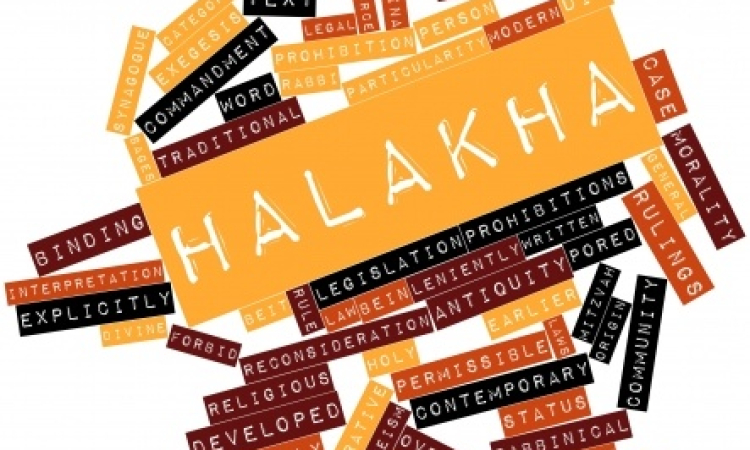
The Lifting of the Torah Scroll (Hagbaha / Hakama) and its return to the Ark -Peninei Halacha
The Chachamim established that the Torah scroll be lifted and its letters displayed to the whole congregation. The original minhag was to lift the Torah before the reading (Masechet Sofrim 14:13-14), which is the custom of Sephardim and a few Ashkenazim, as well as that of the Ari. Most Ashkenazim follow the custom of lifting the Torah after the reading, so that everyone will know that the essential objective is to hear the words being read. After the reading, the Torah is displayed to the Kahal (Shulchan Aruch 134:2; Mishnah Berurah 8; Kaf HaChaim 17; Piskei Teshuvot 9).The Minhag of the Lebanese congregation of Magen Abraham in Montreal and in other lebanese congregations in United states or elsewhere that originated in Lebanon is to lift the Sefer Torah once before the reading of the Torah (its called Hakama) and once after the reading of the Torah immediately after Ashrey and Baruch A-do-nai while saying Yimloch(it's called Hakamat Yimloch).
The lifting (hagbahah) is so important, the Chachamim say (Megillah 32a) that the Magbiha (ashkenazim call him golel), referring to the person who lifts the Torah, receives a reward equivalent to all those called up to the Torah. Therefore, it is proper to give the honor of hagbahah to one of the distinguished people in the community. Today, it is customary to honor even ordinary congregants with hagbahah, although the more correct minhag is to give the honor of hagbahah to a respected person of the community. In any case, great care should be taken not to give the honor of hagbahah to someone who may drop the Torah scroll Chas Veshalom.
L’chatchilah (ideally), at the time of hagbahah it is necessary for the Torah scroll to be held open at the place it will be read, though if it was not, it is not necessary to lift it again (see Piskei Teshuvot 134:4). Regarding an Ashkenazic Torah scroll, the one who is lifting it must open the Torah so that it is possible to see three columns (Mishnah Berurah 134:8).
Some lift the Torah and turn it only slightly to the left and slightly to the right, and many people from the congregation standing in front of the bimah cannot see the writing. The person doing hagbahah must make sure that all the people praying can see the letters of the Torah. It is best if he slowly turns in a full circle, thereby enabling everyone to see (see Piskei Teshuvot 134:5). The Minhag of the Lebanese congregation of Magen Abraham as mentioned above is that the Magbiha will lift the Sefer Torah and pause at every direction a few moments until the Kahal (congregation) will have a chance to say the verses appropriated for the Hakama.The Magbiha will first face the Ark then turn clockwise pause a moment and continue the same at every direction.
It is a mitzvah for all the men and women who see the writing to bow and say “V’Zot HaTorah…” and the Minhag Lebanese is to say "El Sha-da-i ...." (Masechet Sofrim 14:14; Shulchan Aruch 134:2). Many Ashkenazim are not accustomed to bow, and some poskim lend credence to that; however l’chatchilah(ideally), it is proper to bow when seeing the writing (Har Tzvi, Orach Chaim 1:64).
There are those who are accustomed to point to the Torah with their pinky while saying “V’Zot HaTorah…” and then kiss their finger. Some also hold their tzitzit and point to the Torah scroll with it, and afterwards kiss the tzitzit.
The Geonim introduced the recital of Half-Kaddish after the conclusion of the Torah reading, just as it is customary to recite Kaddish after verses of scripture (Piskei Teshuvot 147:9). So as not to interrupt excessively between the Amidah and the Kaddish-Titkabal after U’va L’Tzion (during the week), only Half-Kaddish is recited.
The Ashkenazim are accustomed to say “Yehi Ratzon” while the Torah is being rolled and covered, except on days that Tachanun is not recited (see Piskei Teshuvot 147:7).
According to the Ashkenazic minhag and the custom of some Sephardim, the Torah scroll is returned to the ark after the Torah reading and before the recital of Ashrei. The Chassidic minhag and the custom of most Sephardim is to return the Torah to the ark after U’Va L’Tzion and Kaddish Titkabal.This is also the Minhag Lebanese.
It is customary to recite verses of scripture while escorting the Torah scroll and returning it to the ark.
Bevirkat Shabbat Shalom Umevorach
David Azerad
3) HOLY JoKeS!!
Selection of funny snippets, loosely related to this weeks parashah or current events, to brighten your day



4) FOR KIDS
Click on the image to open the youtube video







